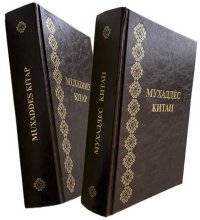
The Institute for Bible Translation (IBT) has produced the first-ever translation of the complete Bible into the Karakalpak language. The project began in the mid-1990s and was carried out by IBT in partnership with the United Bible Societies and SIL International. During the preparation of the full Bible, the following trial editions were published in Karakalpak: the Four Gospels (1999), Stories of Jesus Christ (2001), the New Testament (2004, audio recording* 2011), the Children’s Bible (2007, and Roman and Cyrillic script), Genesis (2009), and Ruth/Esther/ Jonah (2009, + DVD 2010).
Karakalpak means "black hat" (from the name of men's black fleecy headdress). Karakalpaks live mostly in the Republic of Karakalpakstan in northwestern Uzbekistan, as well as in Kazakhstan and Russia. The Karakalpak language belongs to the Turkic family and is closely related to Kazakh. According to the Ethnologue (2019), it is spoken by 726,000 people in Uzbekistan. Karakalpakstan is located on the southern shore of the Aral Sea, where the local population suffers from an ecological disaster: every year the wind blows millions of tons of dust, salty and polluted sand from the dried Aral Sea bed onto the region's most fertile arable land.
Traditionally, Karakalpaks are Sunni Muslims. In recent decades, a small number of Karakalpaks have become Christians, and there are now several national churches that have actively participated in comprehension testing of the prepared text and have waited many years for the release of the Bible in their language.
The Karakalpak Bible was published by IBT in two scripts separately: a Cyrillic edition and a Roman script edition.. This is a common practice of IBT for publications in countries of the former republics of the USSR which have switched from the Cyrillic to the Latin alphabet. In Uzbekistan, this process began in 1993, and the preferences of readers are divided by age: young people mostly use the Latin alphabet, while older people are comfortable with the Cyrillic alphabet. Both editions are supplied with an extensive scholarly apparatus, which consists of an introduction to each book, a glossary, explanatory footnotes, maps of biblical sites, tables of weights and measures, etc.
The text of the Karakalpak translation is available on the IBT website in the Electronic Publications section (Cyrillic, Roman), as well as in apps for Android (Cyrillic, Roman) and iOS (Cyrillic, Roman).

Share: